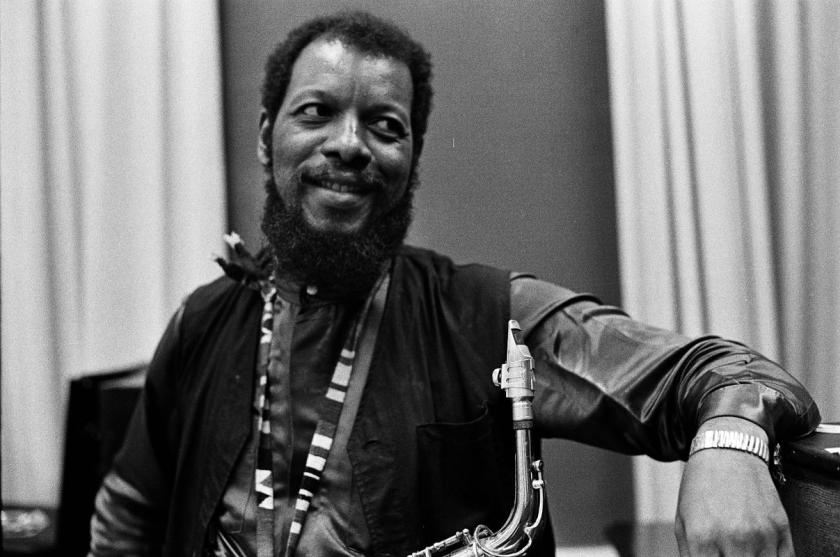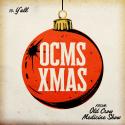Like John Coltrane, Ornette Coleman, who died this week, was both a defining and divisive figure in jazz history. His highly individual and virtuosic playing and his development of a non-harmonic style of improvisation and composition have remained milestones in the development of modern jazz. Born in Fort Worth, Texas, and developing as a musician in a series of R&B bands in Los Angeles, he studied musical theory privately, initially meeting widespread ridicule whenever he proposed his novel techniques. He cut a dedicated if idiosyncratic figure for most of the 1950s, operating a lift by day and playing in obscure clubs at night.
Eventually, however, he and his trumpet-playing partner Don Cherry came to the attention of the more influential bassist Red Mitchell, and their careers accelerated rapidly. More formal tuition led to a series of gigs at the Five Spot club in New York in 1959, and recordings for Atlantic Records. The three albums The Shape of Jazz to Come, Change of the Century and Free Jazz acquired almost instant global recognition, and revealed a visionary and original technique, which nonetheless had its roots in the older black idioms of black folk, his characteristic wailing alto saxophone an invocation of the plaintive vocal roots of Afro-American musical tradition. In that sense, he liberated blues as well as jazz.
It was always going to be difficult to sustain the explosive influence of his early recordings
Though he spent much time theorising later in his career, his style was in most respects fully formed when he arrived in New York at the age of 29. He rarely played with a chordal instrument, and his music was non-harmonic: there weren’t the chords or sequences, the changes of which had been such a crucial element in jazz. Instead, he developed a style of “horizontal” improvisation, involving asymmetrical melodic phrases, unexpected rhythmic accents and use of drums. Above all, from both himself and Cherry, there was a completely convincing playing style characterised by fluttering, swooping and chattering notes, and organised according to sequential pattern rather than harmony.
It was always going to be difficult to sustain the explosive influence of his early recordings, and the peak of his career was undoubtedly the decade following The Shape of Jazz to Come. He would later spend much of his time composing and expounding his theory of “harmolody”, become interested in Moroccan music, and experimenting with both rock and classical forms. His influence is harder to define than that of his contemporaries Parker, Coltrane or Lester Young. It’s sometimes suggested that he misunderstood the books from which he learnt his musical theory, but it’s more likely that his impact on the tradition has not yet fully been assimilated. His sound echoes through the music today.
Here are some key moments in his musical odyssey.
Complete Live at the Hillcrest Club (1958)
One of Coleman’s earliest recordings, and highly unusual in that it features a pianist, Paul Bley, an important musician in his own right. A crucial stage in the documentation of Coleman’s development.
“Lonely Woman”, from The Shape of Jazz to Come (1959)
One of Coleman’s classic tracks, on one of the century’s seminal albums. For all of its forbidding originality, “Lonely Woman” is still a fundamentally lyrical sound.
“Una Muy Bonita”, from Change of the Century (1960)
One of Coleman’s finest compositions, technically brilliant, but completely charming, showing Coleman’s own playing at its fluent, idiomatic best.
Free Jazz (1960)
Alongside Coltrane’s Ascension, one of the key statements of jazz modernism – expressionist, full of splashes of sound.
“Faces and Places” from the Ornette Coleman Trio’s recording At the Golden Circle (1965)
The climax of Blue Note’s involvement with the Ornette Coleman Trio finds them at peak power, on their first European tour, here in Sweden.
“Macho Woman” from Body Meta (1975)
One of the most explicit statements of Coleman’s “harmolodic” method, in which all features of the music – rhythm, melody and harmony – are treated equally. It sounds a bit like rock, but in fact plays with the rhythm completely differently.
Watch the trailer for Shirley Clarke’s 1984 biographical film, Ornette: Made in America
Clarke assembled footage from the 1960s and early 1980s for her biographical film, of which full-length versions exist illictly online.















Add comment